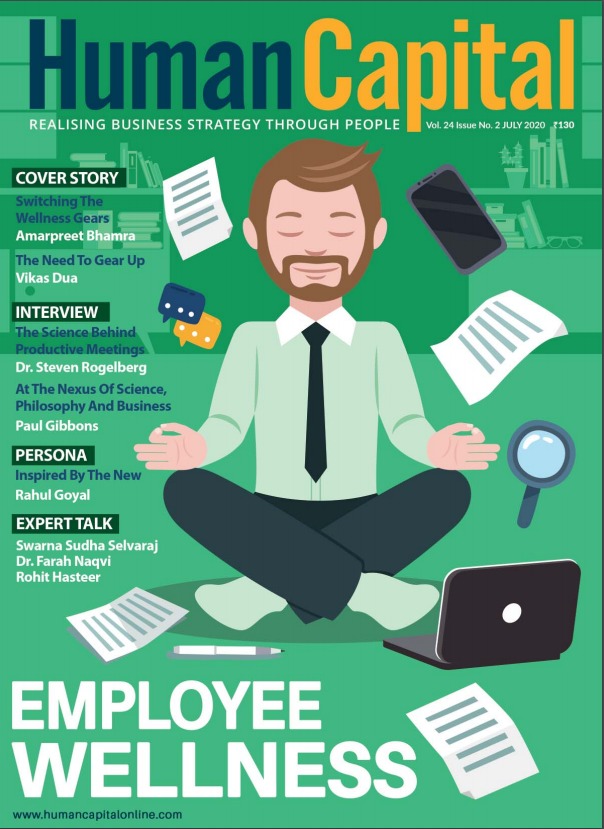Agile came from humble beginnings as a yardstick in software development, and, has now begun to enshrine itself in project management as well. The Agile Manifesto of 2001 called for valuing human interaction, a collaborative mindset, adaptability, and, a solid product over the so-called “means” to achieve an end – process, comprehensive documentation, contract negotiation, and, plan-based actions. The literature on the concept will constantly call for organisational training opportunities to “become Agile.”
Agile principles and values influence and enable organisations to adapt to an increasingly volatile, uncertain, complex, and ambiguous clientele. Though cumbersome to adopt, agility is a practice best experienced by forming small, autonomous teams that continuously strive to deliver value to their end consumers. This consequently builds both competitive spirit and camaraderie within the aspiring organisation, keeping agile values as the fulcrum of operations. The cluster of teams, then, actively and continuously initiate communication, interact, and, coordinate with other teams to tackle obstacles that can hinder agile-based workflows. These would include scope creep – continuous, unplanned project scope growth – and greater time and commitment requirements.
Agile – Success stories and shortcomings
Agile principles and practices have now percolated cross-industry into the ever-changing, customer-driven marketplace and general management. One of the most popular frameworks that help implement Agile within a series of fixed-length iterations, or sprints, is Scrum. While Agile is a set of principles and practices, Scrum is the process of executing these principles. In its annual State of Scrum survey, the Scrum Alliance, a unified Scrum community, details the issues of scaling and agile transformation from both the practitioner and Scrum coach/master perspectives. The end goal of this practice is to understand, compare and consider the efficacy of Agile methods across industries annually. The report contains information collected from 27 industry verticals that implement Scrum, such as Consulting, Human Resources, Sales and Marketing and Education, apart from IT.
Agile principles help connect small, high-performance teams, improving transparency and visibility of work across teams and among consumers. This essentially transforms an old, vertical dynamic of an organisation into one that has a common mindset – that of delivering value to customers. The focus of providing value to the customer is also why organisations choose Scrum, with 85% of the organisations positing that Scrum improves the quality of work life. So, while this might sound counter-intuitive to the process of acquiring Scrum certification, Agile aspirants would be better off recommending Scrum certification to colleagues, friends, and professionals, upon obtaining the certification themselves. This also goes back to the Agile principle of a collaborative mindset.
In 2017, several media outlets, including Business Insider and USA Today, listed ScrumMaster as one of the highest-paying jobs in the United States. This stems from a lack of trained individuals capable of steering an organisational overhaul to adopt Agile principles and practices into the company framework. As BCBSAZ HR Director, Torrie Michaud, states, “When an applicant has a Scrum certification, we know that the applicant will be a collaborative and strong communicator while being eager to improve processes or bring new ideas."
Agile and Scrum find a place in mental health as well, with Monash Health in Australia implementing Agile principles of a collaborative and feedback-oriented path to mental health and recovery, without compromising individualised quality.
Agile through the ages!
What Agile is not, however, is a "cost-cutting" technique to curb expenditures and "improve" the company's workflow. Many organisations and conglomerates boast Agility, but only do so in name. The top-down approach to becoming agile is counter-intuitive to the goals and values of Agile, which eventually kills an Agile-based ecosystem. Lisa Hershman, the interim CEO at Scrum Alliance, is of the view that “top-down, waterfall management has reached the end of its time.” Moreover, Agile cannot be implemented selectively; top-performing teams within an organisation cannot adopt Agile principles and function while the remainder of the organisation continues to be a top-down bureaucracy. Similarly, customer value and shareholder value will forever remain at distinct odds with each other, and one cannot serve two masters.
Under current management practice systems, Agile will fail in its adoption. It is only through time-tested experience and practice that Agile becomes part and parcel of the organisation's mindset. Merely mimicking Agile practices from other Agile-based institutions won't work in creating an Agile atmosphere at individual organisations – an organisation cannot “do Agile.” They need to “be Agile.”
Does your organisation support you in maintaining work-life boundaries?
Trending
-
SBI General Insurance Launches Digital Health Campaign
-
CredR Rolls Out 'Life Happens' Leave For Its Employees
-
Meesho Announces 30-Week Gender-Neutral Parental Leave Policy
-
Microsoft Unveils Tech Resilience Curriculum To Foster An Inclusive Future
-
60% Indian Professionals Looking For Job Change Due To COVID: Survey
-
SpringPeople And Siemens Collaborate For Digital Transformation Push
-
86% Professionals Believe Hybrid Work Is Essential For Work Life Balance: Report
-
Almost 1 In Every 3 People's Personal Life Affected Due To Work Stress
-
Meesho Rolls Out Reset And Recharge Policy For Employees
-
80% Of Talent Leaders & Academics Say Pandemic Changed Skill Needs For Youth: Report
-
Hero Electric Rolls Out 'Hero Care' Program For Employees
-
Human Capital In Collaboration With ASSOCHAM Hosts Virtual Conference
-
IKEA India, Tata STRIVE Collaborate To Create Employability And Entrepreneurship Opportunities
-
SAP India, Microsoft Launch Tech Skilling Program for Young Women
-
DXC Technology, NASSCOM Collaborate For Employability Skills Program
-
Lenskart To Hire Over 2000 Employees Across India By 2022
-
Mindtree Launches Learn-and-Earn Program
-
Tata AIA Extends 'Raksha Ka Teeka' To Its Employees
-
Swadesh Behera Is The New CPO Of Titan
-
NetConnect Global Plans To Recruit 5000 Tech Professionals In India
-
Hubhopper Plans To Hire 60% Of Indian Podcasters By 2022
-
Corporate India Needs More Women In Leadership Roles: Report
-
Aon to Invest $30 Million and Create 10,000 Apprenticeships by 2030
-
Tech Mahindra Launches ‘Gift a Career’ Initiative for Upskilling of Youth
-
40% Women Prefer Flexible Working Options in Post-COVID World: Survey
-
3 out of 4 companies believe they can effectively hire employees virtually: Report
-
Vodafone , CGI and NASSCOM Foundation launch digital skills platform
-
Odisha: Bank, postal employees to deliver cash for elderly, differently-abled persons
-
Skill India launches AI-based digital platform for "Skilled Workforce"
-
Hiring activity declines 6.73% in first quarter: Survey
-
70% startups impacted by COVID-19 pandemic
-
Bajaj Allianz Life ropes in Santanu Banerjee as CHRO
-
Over 70 Percent MSMEs look at cutting jobs to sustain businesses
-
93 Per Cent employees stressed about returning to office post-lockdown
-
Johnson & Johnson India announces family benefits for same gender partners
-
Indian firms turning friendly towards working mothers
-
Welspun India names Rajendra Mehta as new CHRO
-
Wipro partners with NASSCOM to launch Future Skills platform



Human Capital is niche media organisation for HR and Corporate. Our aim is to create an outstanding user experience for all our clients, readers, employers and employees through inspiring, industry-leading content pieces in the form of case studies, analysis, expert reports, authored articles and blogs. We cover topics such as talent acquisition, learning and development, diversity and inclusion, leadership, compensation, recruitment and many more.
Subscribe Now











































Comment